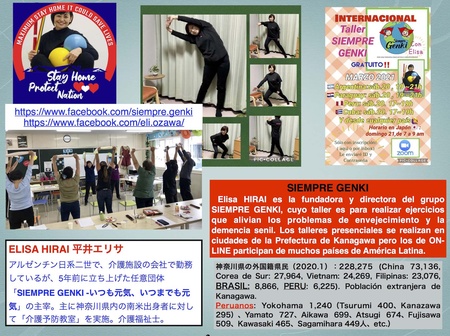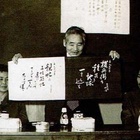Governor Kaneko, a former judge, served as the governor of Kagawa Prefecture for six terms, a total of 24 years, from 1950. He was also one of the key figures in spreading the prefecture's specialty, "Sanuki udon," throughout the country. During his term in office in 1956, he was invited by the U.S. Department of State to participate in a leadership exchange program, staying in the United States for three months, and then visiting four South American countries (Brazil, Paraguay, Argentina, and Uruguay) for two months, where he inspected the immigration situation of the prefecture's residents.
The second part of his co-authored book, "Traveling in South America," includes the Governor's detailed diary and observations of the places he visited. It was a very tight schedule, covering the major places that Imayuki had visited in a year two years earlier in just 60 days. The Governor also argued that the overseas migration of his compatriots should not simply be promoted as a solution to Japan's growing population, but that migration should be promoted to support the overseas expansion of Japanese companies, and that the personal connections of Japanese descendants should be utilized more. He hoped that by doing so, the role of Japanese descendants would be emphasized and their social status would be improved. He called on young people in Japan to take on this big challenge, saying that contributing to the development and growth of immigrant-receiving countries was the path forward for Japan, which had lost the war.
Due to the nature of his position as governor, he had many meetings with local government officials and the Japanese Association, and it seems that he often had drinking parties with immigrants until late into the night. Having read Imayuki's report before his trip, the governor's views were similar to those of Imayuki. Here are some excerpts from them.
- Immediately after the war, there were already 400,000 Japanese people in Brazil. Their contributions to agriculture are incredible, and the Brazilian people recognize this and respect the Japanese. Although the Japanese language was banned during the war, it is still the native language in areas where people emigrated, so I hope that they will learn Portuguese more than ever before, expand their economic activities, and advance in society.
- Before the war, Naoichi Kasamatsu came to Paraguay from Brazil as a surveyor-in-chief and was involved in the development of the La Colmena settlement. He was the first immigrant from this country to Kagawa Prefecture. The second immigrant, Shoichi Murao, immigrated to La Colmena in 1938, but later moved to Encarnación. The postwar settlement of Chaves was located in the middle of a virgin forest, and I listened to the stories of the prefectural residents Muraboshi and Morita, as well as Yokokawa and Seki, who were living in difficult conditions, as we drank until the early hours of the morning. To catch an evening flight, I cycled over rough roads to Encarnación Airport, about 10 kilometers from the settlement. 2,500 German immigrant families had already settled in this area, and they had been quite successful, so their agricultural management can be used as a reference.
- In Buenos Aires, Argentina, we were warmly welcomed by Okinawan families (Mr. Hosokawa, Mr. Hirai1 , Mr. Ninomiya, etc.) who are engaged in floriculture, and they showed us around.
- I had a discussion with a Japanese person who is engaged in flower cultivation and sales in Uruguay. The cityscape of Montevideo and the citizens' love of cut flowers are similar to those of Buenos Aires.
Returning from Uruguay to Brazil, he went from São Paulo to Belém in the Amazon, visited the Tomé-Açu settlement, and met with Hoshino Osamu and Nogami Mataichi, natives of Kagawa Prefecture who had worked as interpreters since the settlement. There, he seemed surprised to see the large mansions, industrial associations, schools, and hospitals of Japanese people who had made their success in pepper. He also noted that while he appreciated the potential for developing the Amazon, the land was so vast that the distance between Belém and Manaos alone was 1,300 km, the same as the distance between Tokyo and Nagasaki, and that Japanese people should be cautious about getting involved in such a business.2
After completing his five-month overseas tour, which included three months in the United States, Governor Kaneko returned to Kagawa and resumed his regular official duties. He continued to work for the people of Kagawa Prefecture overseas as chairman of the Kagawa Emigrants Association, and published a valuable resource, "Traveling in South America," in September 1957.3
Connection with Imayuki's descendants
Finally, I would like to say a few words about the descendants of Imayuki, with whom I have a connection. Many of Imayuki's descendants live in Brazil and Paraguay, but there is one in Argentina. Her name is Hiro, Imayuki's fourth daughter, whom I have fondly referred to as "Auntie Hirai-san" since childhood. Hiro arrived in Argentina in June 1955 as the wife of Hirai Shigetsugu, who was Imayuki's student and assistant. Two years later, in 1957, my father moved to Argentina as the first postwar Ministry of Foreign Affairs agricultural trainee, and married my mother in 1961, so my parents have been greatly looked after by the Hirai family ever since.
As an aside, around the time that Professor Imayuki was on a study tour of South America, my father was studying at the horticulture department of the Agricultural Technology Research Institute of the Ministry of Agriculture and Forestry in Kanagawa Prefecture. After Professor Imayuki returned from his visit to South America, my father stayed at his house for a few days and listened to his stories and received advice from him. This experience and other stories led my father, who was the seventh of eight siblings, to receive a recommendation from a professor at the Agricultural Technology Research Institute and ultimately decide to emigrate to Argentina.
I remember Hiro's husband, Eiden Hirai, loving red wine and always having a tan. I later learned that this was because he was always driving back and forth in a truck from the flower farm he owned in the northern province of Misiones. He was always smiling and caring for everyone, not just people from the same prefecture. Unfortunately, he passed away in 1985, but after that, his wife Hiro spent her time in her beloved Misiones. She seemed to like the farm her husband left behind and its subtropical climate.
The last time I met him was in September 2019, when I returned to my hometown. He passed away in August 2020 at the age of 86, but he loved haiku and senryu and won several competitions. I will introduce some of his works here.
Haiku
The Milky Way, my parents who have aged and become immigrants, the cosmos, the playfulness of young girls,Senryu
Living with the heavens in the climate of the Pampas
Visiting Japan to cross the Great Seto Bridge
Hiro's eldest daughter, Elisa, currently lives in Japan. Since we met again in Japan around 2010, we have occasionally had dinner together with other friends. After a while, we discovered that we were both involved in supporting Japanese South American workers in Japan. Although it was a coincidence, I couldn't help but think that it may have been the thoughts of Professor Imayuki and the other seniors that led us to this relationship.
Elisa currently works at a nursing home, and for the past five years has been teaching a nursing care prevention class in Spanish called " Siempre Genki (Always Healthy, Always Healthy)" in various parts of Kanagawa Prefecture . The class is attended mainly by elderly Peruvians, and is said to be very popular. I have had the opportunity to observe the class several times, and everyone enjoyed participating, exchanging information with each other about various concerns.
There is proof that Professor Imayuki's aspirations are being carried on here in Japan by his caring granddaughter Elisa.

Notes:
1. Married to Yuki Ima's fourth daughter, Hiro
2. The governor's records show that the distance is from Tokyo to Nagasaki, but it is only 900 km in a straight line. Belém to Manaos is 1,300 km, which is the same distance as from Aomori to Kagoshima. As of 2021, if you go by land, you have no choice but to detour through Porto Velho in Rondônia, so it is more than double that distance, at 3,000 km. If you travel by plane, it takes about three hours, but currently it takes two days with a ferry transfer, and five to six days by sightseeing boat.
3. The "Migration to South America" section of the prefectural government website contains information about the governor's recent visits to South America.
Kagawa Prefectural Government, General Affairs Department, Governor's Office, International Affairs Division
References:
Imayuki Shinichi and Kaneko Masanori, "Traveling in South America," published by the Kagawa Prefectural Public Relations and Documents Division, 1957.
"Kagawa Prefecture Association of Argentina," 35th anniversary commemorative magazine, 2005.
Chapter 5: "The path walked by Hirai Hiro, the fourth daughter of Imayuki Sensei, the 'father of immigration,'" Kagawa Prefecture History of Migration to South America, pp. 135-151, 2004.
© 2021 Alberto Masumoto






